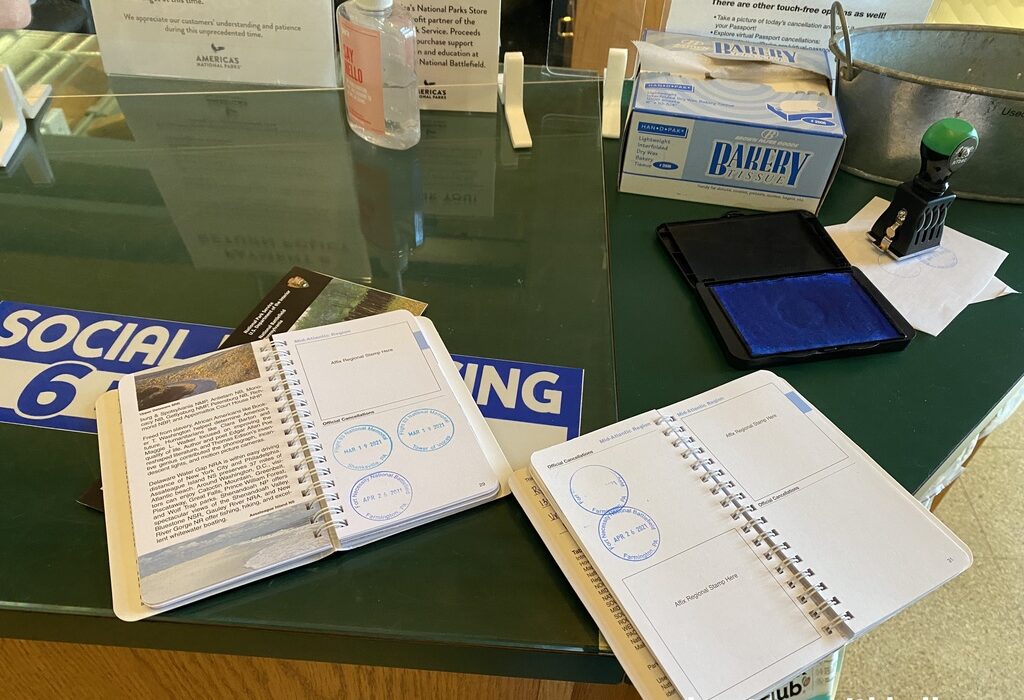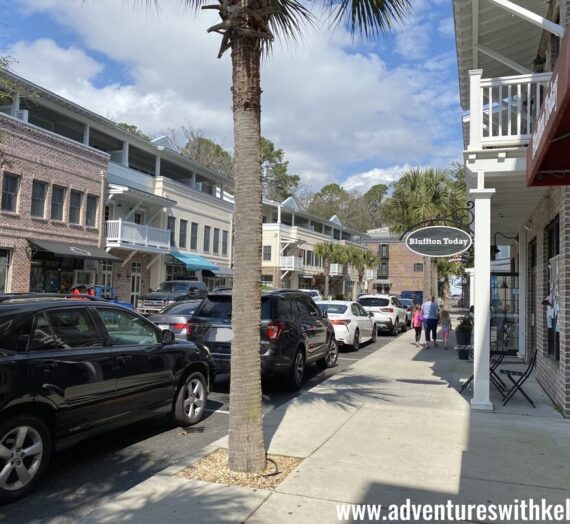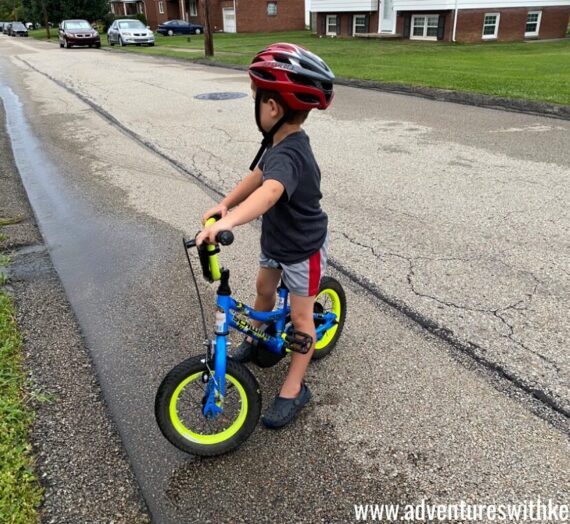Using the National Park System as a guide for your visits is the perfect way to learn so much about and discover the beauty of the United States of America.
The National Park Service features passports where you can document your travels. You can learn more about the passport program here.
In this post, I’d like to share my personal journey, including things I overlooked, with the National Park passport program. Most importantly I’d like to discuss what to do when you missed your stamp. I spent a decent amount of time and energy going through this process of tracking down stamps. And my hope is that sharing my experience might make the process easier for someone else.
This post contains affiliate links which means I may receive a small commission at no additional cost to you if you make a purchase using this link.
National Parks
The National Parks impacted me greatly after a small handful of visits so I quickly made it a goal to visit all of them. Coincidentally, when I met my husband, I discovered he had the same goal. So needless to say, we are a tad obsessed with National Parks.
Initially, I thought the National Park Service managed the roughly 60 larger National Parks such as Grand Canyon, Yellowstone, Yosemite, and Acadia National Parks.


But I eventually learned the National Park System is comprised of over 400 parks including National Monuments, National Historic Sites, National Battlefields, and more.

When it comes to planning a visit to the National Parks I tend to use my National Geographic Guide to National Parks of the United States.
I also enjoy and utilize the National Geographic Complete National Parks of the United States for a closer look at all 400+ parks.
For a lighter read, I feel inclined to mention one of my favorite books, Leave Only Footprints where Conor Knighton describes his journey through all of the National Parks in a year. He had me at pepperoni rolls.
National Park Passports
The National Park Service offers a variety of passports, where you can collect cancellations (I personally call them stamps) in the Visitor Center to document your visit with the name of the park, the date you visited, and the location.

We have the Classic Edition but there are multiple passports, each organized a little differently.



You can purchase passports and other accessories such as sticker sets, expander packs, etc. online at America’s National Parks or you can visit your local park managed by the National Park Service and the Visitor Center typically sells these items.

I live in southwestern Pennsylvania, so for those who live in the area, you can check for these items at the Visitor Centers at Flight 93 National Memorial, Fort Necessity National Battlefield, Friendship Hill National Historic Site, Allegheny Portage Railroad National Historic Site, and Johnstown Flood National Memorial.



I didn’t always know about the passport program. In fact, I was very late to the game. I had visited over 30 National Parks before I even knew the passports existed.
I was pretty bummed I missed all of my stamps, considering I visited some very remote areas, like Dry Tortugas National Park almost 70 miles off of the Florida coast, and Gates of the Arctic National Park in the Arctic Circle. But I brushed it off and decided to start a passport for my son.
But, even he had visited about five or so National Parks when I learned about them. So I started to wonder if there was a way I could track down his visits to get his passport caught up. The good news is, there is a way.
How to Track Down Your Stamp
A very important first step you want to take with your passport is to write your name and contact information somewhere in the passport in case you misplace your book. There is a place to indicate this information on the inside cover of the Classic Edition.

Typically, when you visit a National Park, you stamp your passport in the Visitor Center.

So why might you have missed your stamp? There could be a variety of reasons. You could be like me, and just not know the passport program exists. Otherwise, maybe the Visitor Center was closed at the time of your visit, maybe you forgot your passport, or maybe you simply forgot to get your stamp.
Then, it’s time to track down your stamp. I called a few parks to learn how to go about it and they each had a different response. Some parks took my information and told me they would send me a stamp. But some of them suggested I send a letter with my request.
Since I was sending one letter, I decided to send a letter to all of the parks, just so they had my request in writing.
The Stampable Stickers
Initially in the envelope, I included a brief letter with my request and a self-addressed stamped envelope. Later, I’ll mention what I included in the letter.

But as the stamps began to arrive promptly on pieces of paper, I discovered that the Park Service sells stampable stickers.


I was just about to cut up the pieces of paper and tape them in the book. But it’s easy to get a little particular about these passports and I did. So I decided to resend all of my letters, including the stampable stickers in the envelope so the stamps would arrive on the sticker and I could just add them to the book instead of clumping up the book with tape. To me, it was worth the extra work because the passport feels a lot cleaner.


If you don’t want to buy stampable stickers, I don’t know why you couldn’t just send a regular label. The stamp is over an inch in diameter. So I would recommend sending a label that is at least 1 1/2″ such as name tag labels.
Now that I’ve discovered the stampable sticker, I actually prefer to use this method. That way, the passport can stay at home and there’s less chance of me misplacing it. We’ve also visited parks on rainy days. So it’s been nice to have the option to stamp the sticker while the passport can stay in a safe dry place.
Someone left a comment on my blog with a suggestion to just send paper, cut it out, and glue it in with a glue stick. I don’t know why but for some reason this never crossed my mind. It’s a great idea (thanks for sharing). This person mentioned she prefers this method over the stampable sticker because she feels the ink is brighter on paper versus stampable stickers, and some stampable stickers she received back were off-centered.


She also mentioned that after several attempts, she found a leather cover to fit the classic edition passport which also holds some cash or credit cards. This is a cheaper version compared to the leather cover offered by the Park Service.

The Letter
Here is what I would recommend including in a brief letter:
- which stamp(s) you need and how many
- the date you visited
- what surface you want the stamps on
- contact information
Here’s an example:
To whom it may concern:
Please send two stamps for Zion National Park dated for Aug 12, 2018, stamped on the stampable stickers.
Thanks,
Kelly adventureswkelly@gmail.com (xxx-xxx-xxxx)
Which Stamps You Need
This is where you indicate which stamp you need for which park. For example “I’m requesting a stamp for Hot Springs National Park.” This sounds straightforward, but we came to learn that some parks have multiple stamps. Hot Springs National Park also has a stamp for Fordyce Bathhouse. Additionally, there are stamps for a park’s centennial. So you can consider calling the park before you send a letter to see which stamps they offer. Or you can send them multiple blank stampable stickers (if you go in that direction), and they may send you the additional stamps.
Also, indicate if you need multiple stamps (e.g. I am requesting five stamps for Yellowstone National Park).


The Date
You want to indicate the date you visited. If it’s been a long time, maybe the park no longer has a stamp for that date, or maybe you don’t recall the date you visited. You can consider requesting the park keep the date blank and you can keep the date blank in your passport or write your own date in.
The Surface Your Want the Stamps On
Specify which surface you want the stamp on (e.g. the stampable sticker, the label provided, the pink paper provided, etc.) if you want a specific surface stamped. Otherwise, they will likely stamp a blank sheet of paper or the bottom of your letter.
Contact Information
It’s a good idea to leave your contact information such as your email and phone number in case the park has questions and some of the parks did contact me for clarification.
Sending the Letter to the Parks
These letters do not go to a central location for the National Park Service. Instead, the letters should be sent to each park’s individual Visitor Center. To retrieve the address, go to the NPS website and do a quick search for the specific park. Some parks share an address such as Everglades and Dry Tortugas National Parks in Homestead, FL.
Receiving Your Letter
The letters rolled in fairly promptly and I simply added the stickers to my son’s passport book. Some of the parks sent us goodies such as bonus stamps, stickers, and maps.
When my daughter came along, we ended up getting an additional passport for her versus having a family passport that we might fight over one day.
Now that I’ve gone through the process and my children’s passports are caught up, I might go back and track my 30+ visits for my own passport, but I haven’t decided. What would you do?
Other Passport Books
I’ve used this method to track down stamps for other passports. For example, we have the Pennsylvania State Parks and State Forests Passport. I’ve sent letters to these parks with stampable stickers because the PA stamps fit in the size of the NPS stampable sticker. The PA book does not have dates on the stamps so tracking down the date and including it in the letter does not need to be included.

This is just my experience with the passport program. Please leave a comment if you have anything to contribute. If you found this helpful please let me know or tag me with your passport adventures on Instagram @adventureswkelly. I want to hear about or see your adventures with the passports in the National Park System.
















Emily
Hello. Thank you for the great article! I am so pleased to find that you can request stamps for places that you have visited, but missed getting the stamp. Do you have any experience with the stamps for the District of Columbia? I am missing most of them and I went to the web page listed in your article to look for addresses and most of them appear to have the same address. I was wondering if this was indeed accurate?
Adventures with Kelly
Hi! I don’t have experience with stamps for District of Columbia specifically. But, there have been occasions when multiple stamps I requested came from the same visitor center. So I would just request both stamps in one letter. For example, Dry Tortugas NP and the Everglades each have their own website, but in the info the same address is listed so I think they share the same visitor center.
Christine
Hi Emily,
The majority of the DC cancellation stamps are available at the Washington monument visitor center. There was 18 stamps available when I was there in late October.
Denise J
Hi Kelly, thank you so much for providing this information. I’m in the same predicament as you. I’ve been to many parks since 1986 and didn’t realize the stamps/passport program existed at the time. I want to go back and get all my stamps. I will send a SASE as you had mentioned and request that they leave the date blank. Thank you again! :0)
Adventures with Kelly
It’s nice to know I’m not the only who completely missed the passports. Yea maybe you can request the date, but just mention if they don’t have a stamper for that date date to just leave it blank. I hope you get it caught up. I bet it would be a lot of fun to reflect on those memories! Best wishes Denise!
Kaye Fink
Hi! So the National Stamps that are at the front of the Collectors Edition, do you place those when you get the page for a park you’ve visited or each year the page come out? Hope that makes sense.
Christina
I had no idea they could do stamps if you missed one! I’m on park 32 and have lots of letters to send out now. Thank you so much!
Adventures with Kelly
I’m so glad this was helpful. I was at about park 32 when I discovered that the passports even existed! I haven’t decided if I wanted to track down my stamps yet or not. You’ll have to let me know how it goes.
Alyssa May
Hey Kelly!
Quick question – do you need to send an empty return envelope along with the letter for them to send the stamps back?
Adventures with Kelly
Yes, I do! I fill out a self-addressed stamped envelope and fold it in half and put it in the envelope with the letter. Then the parks send me the stamps back in the envelope I provided to them.
Jennifer Rahn
Thanks for your post. Just wanted to mention that a great place to see which stamps are available at any location, or along a route, is parkstamps.org . This is managed by the National Park Traveler’s Club for their members. Membership is quite inexpensive, and it can really be a great help as you are traveling about the country.
You also mention the adhesive stamping dots. I use these liberally, but purchase them in quantity. They are are produced by Avery, and come in a pack of about 1000 I think. I’m on my second pack!
We have found most of the staff at the NPS sites have been incredibly accommodating. Give them all the praise they deserve! They preserve, protect, and inspire all of us who find adventure in our national treasures!
And if anyone comes up with a way to expand my overstuffed collector edition, it would make for a great article!
Adventures with Kelly
Thanks for these awesome tips! Sounds like you have been busy hitting many NPS sites! I know there are expansion pages for the classic edition. Sound like there aren’t any for the collector’s edition?
Randall S
Hi Kelly. I like your article. I also am slightly obsessed to the NPS sites and the passport book. I was recently at Governers Island in NYC and the ranger informed me to email the site to request missing stamps. I have downloaded the NPS app and you can access the email addresses in the contacts link for each park. This could save on US postage costs. The app also has photos of most of the stamps you can request.
Adventures with Kelly
These are great tips! Thanks for sharing! Do you mind if I add these tips to the post?